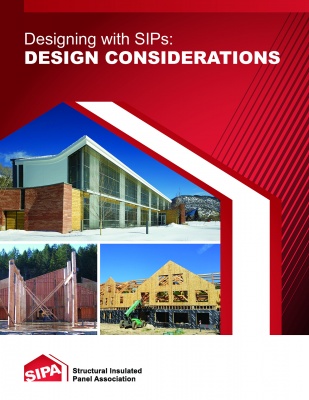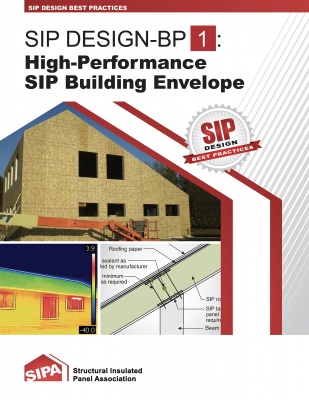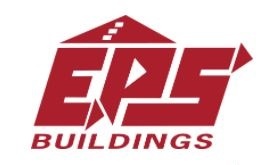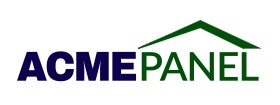
Designing with SIPs

The SIP industry hopes to make your design-role easier and more efficient. The following documents were created specifically for design professionals by the manufacturing members of the Structural Insulated Panel Association (SIPA). They highlight important considerations during the design phase of a structural insulated panel (SIP) structure. Decades of combined knowledge from SIPA manufacturers will help reduce the learning curve and leverage SIPs’ exceptional qualities to achieve the high-performance results owners expect when building with SIPs. The content provides a common industry platform for SIP design.
Designing with SIPs: DESIGN CONSIDERATIONS
Click here to download DESIGN CONSIDERATIONS with key points and checklists for the ten most important considerations when designing a SIP building.
SIP DESIGN Best Practices Series

SIPA is publishing a series of “deeper-dive” explorations of the core topics summarized in DESIGN CONSIDERATIONS. The SIP DESIGN BEST PRACTICES series provides the engineering analysis and explanation behind the essential aspects of SIP design.
- SIP DESIGN BP-1: High-Performance SIP Building Envelope
- SIP DESIGN BP-2: HVAC Systems with SIPs
- SIP DESIGN BP-3: SIP Structural Capabilities
- SIP DESIGN BP-4: SIP Sizes
- SIP DESIGN BP-5: SIP Shop Drawings
- SIP DESIGN BP-6: SIP Fabrication/Manufacturing
- SIP DESIGN BP-7: SIP Installation
- SIP DESIGN BP-8: SIP Roof and Wall Assemblies
- SIP DESIGN BP-9: SIP Electrical
- SIP DESIGN BP-10: SIP Plumbing
SIP Design Process Outline
- Understand client needs and wants.
- Consider SIPs as you conceptualize. Energy-efficient SIPs are often a perfect fit for residential and light commercial projects, eliminating the need for additional continuous insulation on the building exterior.
- Edit and submit this convenient generic SIP Specification with your next appropriate bid.
- Design the building. For SIP structures, prepare your usual architectural drawings. The SIP manufacturer will convert your work into SIP shop drawings that specify SIP size, layout, assembly details and installation specifications. Consider the following as you design:
SIP Design Tips
Structural Capability - See manufacturer load tables for load capacity according to SIP height/length and thickness. Indulge in open space as SIP roofs provide the capacity to span long distances. SIP roofs can cantilever past walls to provide overhangs. SIPs can act as their own header, minimizing cost and maximizing thermal performance.
HVAC - Keep all HVAC equipment and duct work inside the conditioned SIP envelope. The airtight SIP envelope typically reduces the load and allows smaller HVAC equipment. Verify proper equipment sizing with an energy model using ASHRAE Manual J or REM/Rate or Ekotrope design software. Consider specifying a heat recovery ventilator (HRV) or energy recovery ventilator (ERV), as referenced in ASHRAE 62.2 guidelines, for balanced fresh make-up air.
Electric - Vertical and horizontal electrical chases are typically provided by the SIP manufacturer. Plan ahead for special chase location. Surface mounted LED lights should be used instead of recessed lighting.
Plumbing - Design into interior walls.
Cladding - Because SIPs use very little solid lumber, an increased fastener schedule could be required when attaching exterior cladding. In some climate zones, a back-ventilated assembly may be appropriate.















